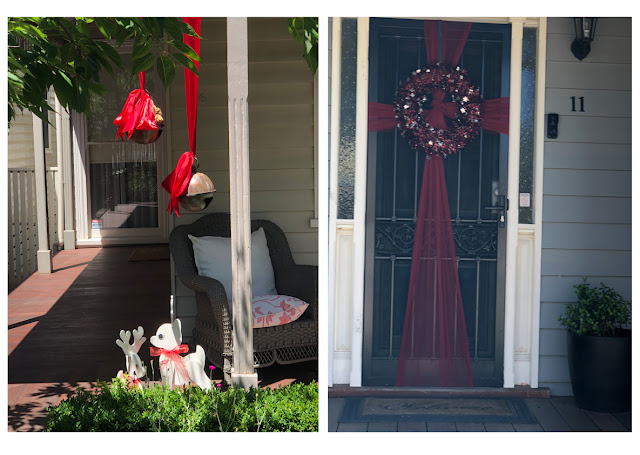An
Englishwoman in Colac by Joan Frecheville Brown
A selection
of her letters
My husband
grew up in Colac, a small city in the Western District of Victoria,
approximately 150 kilometers south-west of Melbourne. It is a commercial centre for an agricultural
district.
My husband
is an historian who writes about the history of Colac and other places. He is always on the lookout for new
information. Recently he left a book on our
coffee table that he was reading. It
looked interesting so I picked it up to peruse it and then commenced reading it
in full.
The book is
a collection of letters written by Joan Frecheville Brown during her time in
Colac. It gave a wonderful snapshot of
life in the 1950s and 1960s in country Victoria.
 Joan was
married to a local doctor, Graham Brown.
They met during the War in Britain, married and came to Australia in
1947. Goodness knows what she thought
when she arrived in Colac – a country town based on milking cows, sheep,
onions, potatoes, cattle saleyards, sawmills and trucking companies. Joan was a sophisticated young woman who had
been living and working in London a large cosmopolitan city and she went to
Colac to start her married life. Quite a
difference but she was very philosophical about the change.
Joan was
married to a local doctor, Graham Brown.
They met during the War in Britain, married and came to Australia in
1947. Goodness knows what she thought
when she arrived in Colac – a country town based on milking cows, sheep,
onions, potatoes, cattle saleyards, sawmills and trucking companies. Joan was a sophisticated young woman who had
been living and working in London a large cosmopolitan city and she went to
Colac to start her married life. Quite a
difference but she was very philosophical about the change.
Back in the
1950 the best form of communication was by letter and Joan was a prolific
letter writer. Her letters were firstly
to her friends and family back in Britain and then to her children when they
went off to boarding school in Geelong.
The letters gave interesting snippets of her life and times in Colac.
She entered
into community life with great enthusiasm.
She was a member of the Schools Mother’s Club, the hospital’s Women’s
Auxiliary, joined the Colac Players, the Film Society and weekly discussion
groups. Some of the fund raising events
were hat parades, chicken and champagne dinners and afternoon teas.
Joan was
very widely read and the house was filled with books. One letter mentions in regard to a function
she was attending where there was a tedious and long- winded speechmaker . . .
the most ghastly speeches - fortunately I had a penguin in my pocket and read
that.
Back in her
London days Joan worked in the film industry so she always had an interest in
films. She mentions films such as A
Hard Days’ Night. She wrote that
this film was brilliantly clever and its photography and off-beat humour was outstanding. Although she thought three songs were her
limit. At another time she saw the film
of Mozart’s Don Giovanni and thought the singing magnificent.
The couple
built a house on a hill overlooking Colac with a very large garden that had a
plantation of Australian natives. Edna
Walling contributed sketches for the layout.
In her letters to the children Joan would mention that the first
daffodil was in bloom, that the wisteria was nearly in bloom or the wind played
havoc with the magnolia. Joan said the
house was for use not show.
The house,
large for its time, was where the couple raised their 4 children, 2 boys and 2
girls. Once the children were at
boarding school Joan wrote to them weekly.
Her son Michael remembers the letters as being newsy and cheerful. Son Jonathan comments that the letters don’t
give a full picture but there was music not only the children’s on violin and
piano but from a large gramophone cabinet in the lounge where Joan played her
classical music records. Daughter Julia
remarked that re-reading her mother’s letters reminded her of her mother's vibrancy and strength and of her intelligence and humour. Daughter Louise said that her parents never
talked down to her, valued her opinions and that she was an individual.
In the
early 1960s Joan contracted a mysterious wasting disease that slowly crippled
her existence and rendered her weak, scarcely mobile and helpless. Despite various
diagnoses (way off beam for the time) and advice from her husband’s medical
colleagues in Colac, Ballarat and Melbourne Joan found no cure. Her condition was later diagnosed as motor neurone
disease. She died in 1967 aged 45.

































